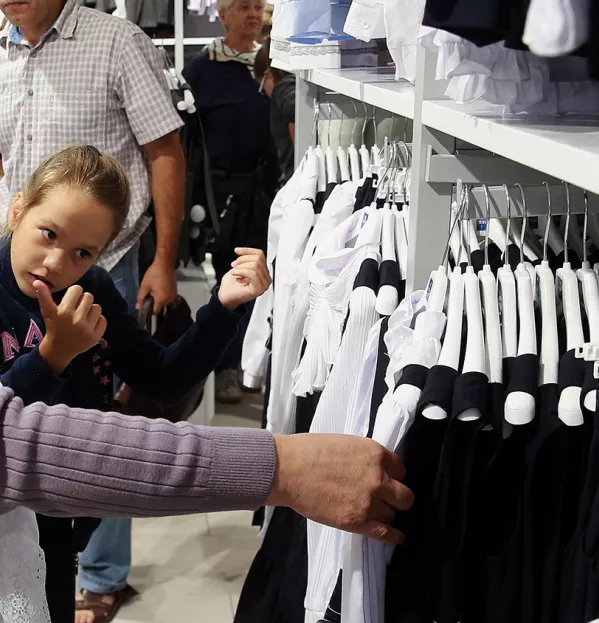The strict uniform rules stigmatising students

A new national minimum school clothing grant has been announced, just days after Tes Scotland found some schools are still taking a hardline stance on uniform that risks alienating and stigmatising young people.
Pupils have even reportedly been sent home wearing a sticker to indicate to parents that their uniform is not up to scratch. This detail emerged in parliamentary papers for last week’s Education and Skills Committee, based on a discussion group that three MSPs held with adult learning workers, youth workers and volunteering organisations, among others.
When concerns over the cost of the school day were discussed, the papers note: “One attendee gave the example of school uniforms where children were given a sticker to wear to highlight that their school uniform was not adequate and they were sent home with this sticker on so their parents were made aware.”
John Dickie, director of Child Poverty Action Group (CPAG) in Scotland, warns that “dress code enforcement can cause problems for children”. He says that this enforcement ranges from “flexible to moderate - where staff allow variations but still moan at [pupils] - to strict enforcement, with disciplinary measures”.
Dickie adds: “In primary schools, children can lose class or house points and subsequent rewards. In secondary schools, young people can receive punishment exercises, demerits, detentions and be sent home for not wearing the correct uniform. Secondary students described being challenged on their uniform in front of their peers as embarrassing or frustrating.”
CPAG in Scotland has also heard from pupils who have been dealt with more sympathetically when teachers were aware of financial problems at home.
Dickie says: “However, they point out that staff may not always know people’s situations and, if they do, the message may not filter through to other teachers, who will still discipline young people throughout the day.”
Help to buy
CPAG in Scotland has welcomed the news that a £100 minimum clothing grant is to be introduced in Scotland from 2018-19. It says that local clothing grants can vary from around £50 to more than £110.
Earlier this year, the Education and Skills Committee heard that, in some cases, even just the piping and school badge on a blazer could cost £40.
Dickie says: “This is great news for the thousands of families who struggle to meet the costs of school clothing on top of all the other essentials they need to budget for.”
But he stresses that this should be seen as “the absolute minimum grant”, as the typical price for a school uniform has recently been calculated at £129.50.
The move comes after Tes Scotland highlighted concerns about the price of some school uniforms (“Teachers back uniform despite ‘very low impact’” , 11 May).
An estimated 120,000 families will benefit from the minimum school clothing grant, meaning that annual costs are expected to reach £12 million, with the government and local authorities each providing half. The government says the size of the grant will be reviewed every two years to ensure it stays in line with the cost of living.
John Swinney, education secretary and deputy first minister, says that the grant will “help relieve pressure on families, reduce cost of living and remove the stress and stigma which can often be associated with struggling to afford essential school items”.
Stephen McCabe, children and young people spokesman for local authorities’ body Cosla, says: “Access to decent clothing is an important part of ensuring that children have the best chance of getting the most from their education.”
Earlier this year, Tes Scotland reported fears about “unnecessary fripperies” on school uniforms, such as piping on blazers and complicated logos (“Elaborate uniforms are pricing out poor pupils, schools told”, 26 April).
You need a Tes subscription to read this article
Subscribe now to read this article and get other subscriber-only content:
- Unlimited access to all Tes magazine content
- Exclusive subscriber-only stories
- Award-winning email newsletters
Already a subscriber? Log in
You need a subscription to read this article
Subscribe now to read this article and get other subscriber-only content, including:
- Unlimited access to all Tes magazine content
- Exclusive subscriber-only stories
- Award-winning email newsletters